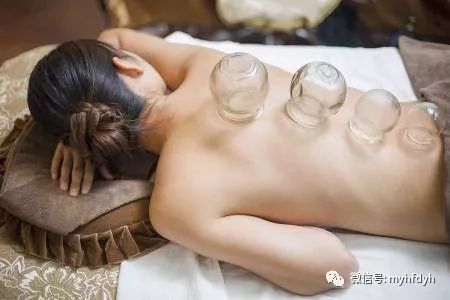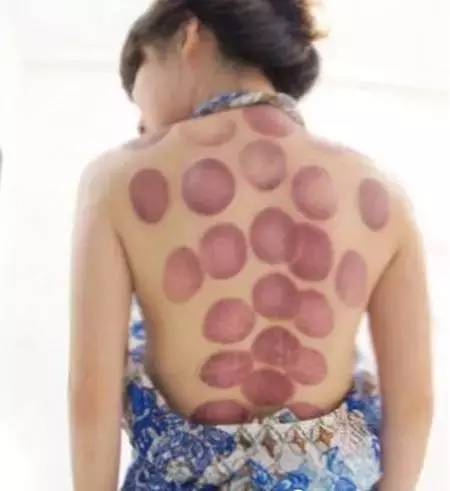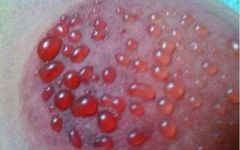I believe many people want to understand this issue, as it is a method of health preservation. For friends who enjoy health maintenance, if they do not know the benefits of cupping therapy, it can be quite concerning. Cupping has been practiced since ancient times and continues to be valued today. What was cupping called in ancient times?In ancient times, cupping was referred to as “Jiao Fa” (children in rural areas may have seen many elderly people using sheep horns for cupping). Now, let’s explore the benefits and drawbacks of cupping therapy.

1. Benefits of Cupping Therapy
1. Cupping therapy can help expel dampness and cold from the body through the skin, thereby eliminating pathogenic factors, revitalizing the spirit, and alleviating chronic ailments.
2. Cupping primarily works because our body’s meridians (jingluo), acupuncture points (xuewei), and internal organs (wuzang liu fu) are interconnected. Therefore, the suction from cupping stimulates the acupuncture points on the body’s surface, promoting the flow of qi and blood, and regulating internal organs, which enhances physical health.

3. Cupping therapy is effective for local tissue injuries, lumbar disc herniation, and other symptoms. Regular cupping can help reduce pain and alleviate symptoms related to tissue damage and lumbar disc issues.
Currently, cupping is often used in beauty and weight loss clinics, and research is gradually being conducted to promote weight loss through cupping therapy.
2. Contraindications of Cupping Therapy: Do Not Cupping Recklessly
1. After cupping, it is crucial to avoid bathing and exposure to cold for at least 2 hours; otherwise, it may lead to illness even in healthy individuals, and could worsen existing conditions.
2. For patients with inflammation or bleeding disorders, cupping may not only be unhelpful but could also cause more severe damage.
3. Frequent cupping can lead to skin issues, infections, and severe bruising.
The above outlines the benefits and contraindications of cupping therapy. It is essential to be aware of some basic knowledge about cupping to avoid blaming the practitioner for any issues that arise.
3. What Causes Blisters After Cupping?
Cupping in Traditional Chinese Medicine (TCM) is a process that uses external physical methods to expel toxins from the body. The formation of blisters after cupping is essentially due to the skin and subcutaneous tissue becoming “filled with fluid”. Pathological products such as phlegm, fluids, and dampness are drawn out through the skin under negative pressure, leading to blister formation. If fire cupping is used, improper technique may also cause burns.
After cupping, in addition to bleeding points and bruising, some patients may develop blisters due to several reasons:
1. The patient has a significant presence of wind, cold, dampness, and toxins in the body, with dampness being particularly prominent. Blistering can be a manifestation of pathogenic factors exiting the body. Sometimes small droplets may appear on the cup wall, indicating dampness.
2. The cupping duration was too long. This varies from person to person and is related to individual constitution. Some can tolerate 20-30 minutes without blistering, while others may blister within 5-10 minutes. Therefore, it is advisable to start with shorter cupping sessions and adjust based on the patient’s condition.
3. The temperature of the cup was too high, which is a rare occurrence. If flash cupping is performed and the cup becomes too hot, leaving it on may increase the likelihood of blistering.
4. Different body areas react differently; some areas may blister while others do not. Generally, the back, sides, and buttocks are more prone to blistering.
5. Excessive suction beyond the skin’s tolerance can also lead to blistering.
However, the size and number of blisters largely reflect the internal condition of phlegm, fluids, and dampness. If blisters are prominent, numerous, and pale, with surrounding skin at a normal temperature, it indicates a cold-damp condition; if blisters are less pronounced, fewer, slightly yellow, or cloudy, with surrounding skin warmer, it indicates a damp-heat condition.
4. What Precautions Should Be Taken After Cupping?
1. Cupping must target the correct acupuncture points.
Cupping should be performed on the correct areas; it is not just about cupping where it hurts. TCM emphasizes syndrome differentiation and treatment. In addition to cupping the painful area, related acupuncture points should also be cupped to achieve the desired effect. For example, if a patient has lower back pain, cupping may also be needed on points in the legs. Many people are not familiar with acupuncture points, so it is best to have cupping done at a professional health center or a reputable hospital.
2. Do not repeat cupping if the purple marks have not faded.
Some individuals may wish to continue cupping the painful area even if the pain has not completely subsided, hoping to achieve a stronger therapeutic effect. However, this is incorrect. If the purple marks from the previous cupping have not completely faded, it is not advisable to continue cupping in that area, and one should switch to related acupuncture points. Otherwise, it may not only fail to alleviate pain but could also lead to more issues.
3. Duration of cupping.
Some people try to extend the cupping duration, believing it will yield better results. However, experts advise that cupping should generally be limited to 10-15 minutes; if left on too long, it may lead to blistering, rupturing, or even infection.
5. Who Should Avoid Cupping?
1. Pregnant women should avoid cupping on the lumbar and abdominal areas.
2. Patients with severe emphysema should not have cupping on the back and chest. Individuals with heart failure or weak constitutions should also avoid cupping therapy.
3. Patients with bleeding tendencies should use cupping cautiously, especially avoiding needling and cupping to prevent excessive bleeding.
4. Individuals with high fever, convulsions, or spasms should not undergo cupping. For patients with epilepsy, cupping should only be performed during seizure-free intervals.
5. Those with skin allergies or skin injuries should avoid cupping, as it may exacerbate allergic reactions, and cupping over ulcerated areas can lead to infection and worsen the ulcer.

6. Individuals who have just eaten a large meal should avoid cupping. Blood is directed to the liver for metabolic processes, and cupping may force blood to the cupping area, causing the heart to work harder, leading to dizziness, nausea, and other discomforts.
7. Cupping should not be performed on areas with ulcers or broken skin. Cupping is contraindicated in the inflammatory phase of abscesses, where there is redness, swelling, heat, and pain. Cupping is also prohibited on facial boils to avoid severe consequences. Unexplained lumps in the local area should not be cupped indiscriminately.
8. Pregnant women and women during menstruation. Especially, pregnant women should avoid cupping on the abdomen and lumbar region.Inappropriate cupping during pregnancy can lead to threatened miscarriage.Similarly, cupping during menstruation on the lower abdomen or lumbar region can lead to excessive menstrual flow.
Warm reminder: Friends who are not suitable for cupping should refrain from it; do not joke with your health. Additionally, those who are unfamiliar with cupping should not attempt it on their own, as you may not know what complications may arise, such as how to control the cupping duration and which areas to treat. Therefore, please do not attempt cupping without proper knowledge.
You may also like the following content:
Shoulder periarthritis is most afraid of cupping; this method of adjustment is simple and effective.
Remember the 8 key precautions for cupping to expel dampness; certain groups must avoid cupping!
Professional knowledge of TCM therapeutic methods for health preservation.
For sales learning, follow the public account below:
Beauty industry professionals are following the public account below:

